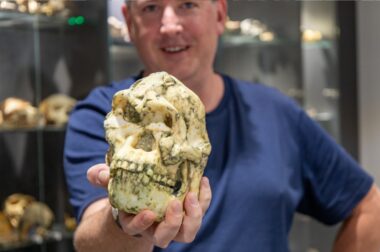WEHI’s Art of Science 2024 is a portrait of discovery, a mosaic of microscopic worlds and a new perspective on life-changing medical research in action.
The online exhibition, launching today, showcases the creative and pioneering work of scientists striving to ensure a future where more people can live healthier and longer lives.
At a glance
-
Discover the WEHI Art of Science 2024 exhibition, launching online today.
-
The exhibition features vibrant and unique imagery captured by WEHI scientists during their research into cancer, infection and immunity, and healthy development and ageing.
-
The 16 still and moving images prominently feature some of the advanced technologies enabling researchers to make transformative discoveries and breakthroughs.
Transformative research through the lens of art
Art of Science, where captivating imagery meets transformative medical research, offers the public an exclusive behind-the-scenes glimpse into the scientific process and discoveries being unearthed at WEHI.
The online exhibition of 16 still and moving images highlights WEHI’s research efforts across a range of areas, from gaining a better understanding of breast cancer to seeking treatments for Parkinson’s disease and reducing the global health impact of tuberculosis.
Art of Science is a long-standing annual WEHI exhibition, founded in 1997 by former director Professor Suzanne Cory AC.
WEHI director Professor Ken Smith said the images revealed the inspiring power of life-changing medical research.
“Great science, just like great art, takes immense imagination, creativity and perseverance,” Prof Smith said.
“At the heart of WEHI’s work is our mission to help solve the most urgent health challenges of our time, to make a profound difference in people’s lives.
“We invite you to dive into the hidden beauty of science and discover the ingenuity of the dedicated researchers working on the next vital medical breakthrough.”
Enter the new tech era of medical research
This year's images showcase numerous advanced technologies, offering unparalleled behind-the-scenes insights into cutting-edge scientific research.
Innovative spatial imaging technologies like the MIBIscope – which acts like a “Google map” for proteins in tissues – helped to shed light on how cells interact and communicate in the body. Images also include research using lattice light sheet microscopy for live cell imaging, offering unprecedented 4D imaging capabilities.
These advanced techniques enable researchers to work faster and more accurately, to find scientific breakthroughs to help inform the development of treatments and diagnostics and for some of our most complex health issues.
Top images awarded
Prof Smith, who commenced in April 2024 as WEHI’s seventh director after returning to Australia from the UK, is this year’s Art of Science judge.
The winner in the still image category is Down the Rabbit Hole by researchers Dr Andrew Leis, Associate Professor Shabih Shakeel and Dr Mihin Perera. The artwork features one of the many tiny holes in a mist generator, a device adapted by researchers to spray fine mists of protein molecules, for freezing and photographing in a cryo-electron microscope.
Stream of Happiness by Dr Verena Wimmer and Dr Marlene Schmidt is the winner in the moving category. The image shows nerve bundles connecting distant brain regions and dopamine-producing nerve cells, in a mouse brain. Researchers are studying the death of these cells, to improve targeted therapies for Parkinson’s disease.
Captivated or curious? Explore our incredible images or find out how you can support WEHI’s life-changing research: www.wehi.edu.au/artofscience
Download select Art of Science 2024 images and videos
About us:
About WEHI (Walter and Eliza Hall Institute of Medical Research)
WEHI is where the world’s brightest minds collaborate and innovate to make life-changing scientific discoveries that help people live healthier for longer. Our medical researchers have been serving the community for more than 100 years, making transformative discoveries in cancers, infectious and immune diseases, developmental disorders, and healthy ageing. WEHI brings together diverse and creative people with different experience and expertise to solve some of the world’s most complex health problems. With partners across science, health, government, industry, and philanthropy, we are committed to long-term discovery, collaboration, and translation. At WEHI, we are brighter together.
Find out more at www.wehi.edu.au
Contact details:
M: +61 475 751 811
E: [email protected]

